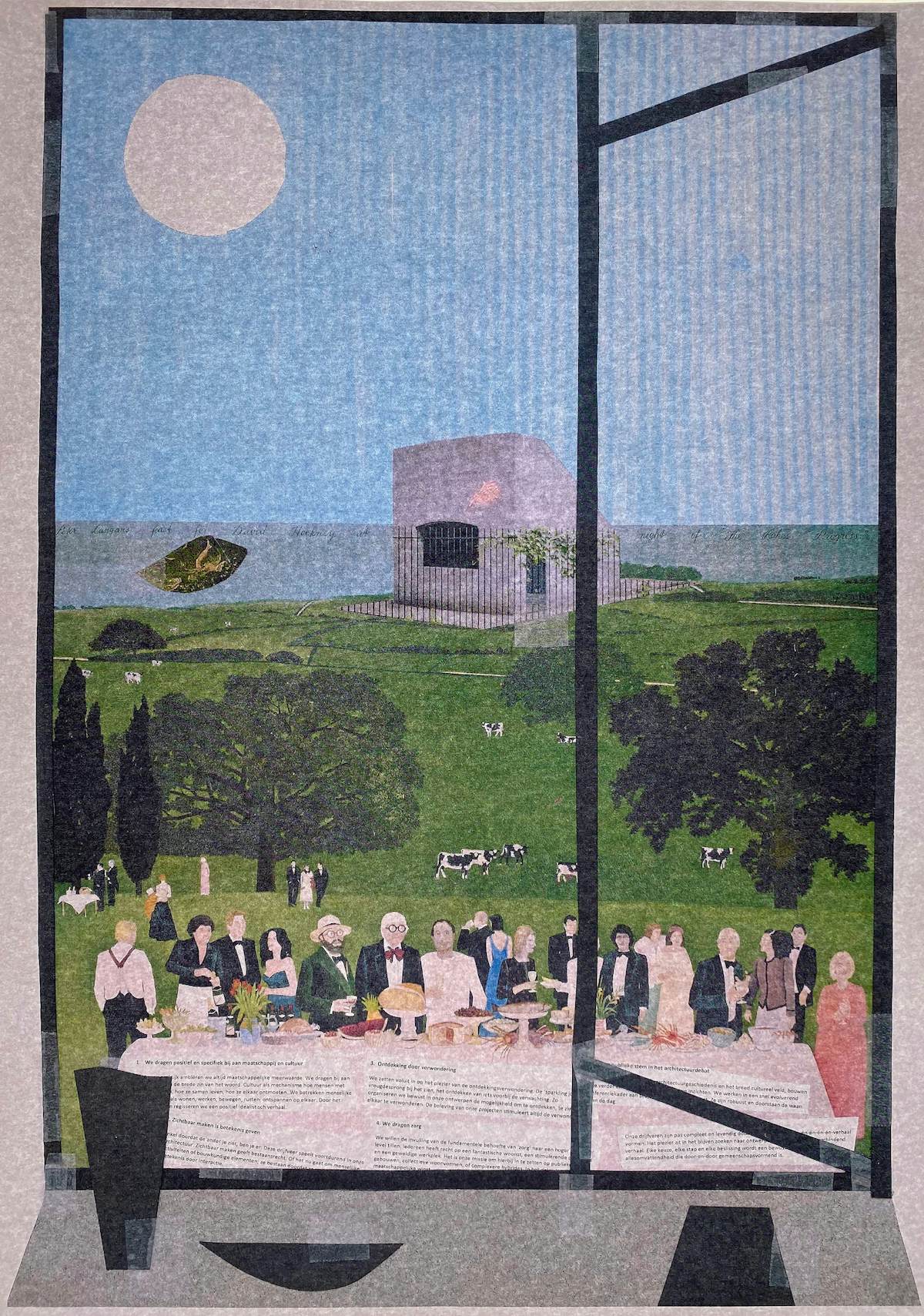The Shape of a Room
FVWW architecten
30/06/2020
Back in the early 1960s Siena became the first Italian metropolis to restrict access to motor vehicles. The bus deposited us at the edge of the city. We pulled our suitcases into the dimly lit web of alleyways. The rain was now a drizzle and the black cobblestones shone darkly. The narrow streets made the houses loom over us. Their greying terracotta bricks were only vaguely perceptible in the night. The sharp turns of the passageways and the closeness of the buildings gave me the sense that I was entering a living organism. With every step I pressed deeper into it and, as though in response, it made room. I was inside a place both known and deeply unfamiliar.
The flat I had rented turned out to be part of an old palazzo. It had frescoed ceilings and perfectly proportioned rooms. The modest exterior of the building made the beauty of these private spaces even more acute. Over the coming days, and whenever I left the house, I was often conscious, even without looking back, of the sober façade. It was like an ally to whom I wanted to unburden all sorts of secrets. The place reminded me how the buildings we encounter, like new people we may meet, can excite passions that had up to then lain dormant. Most of the time we are not even aware of such adjustments. They happen mid-stride, and are often mutual, for, just as we influence and are influenced by others, the atmosphere of a room too is marked by what we do in it. And most of what we do vanishes, but a slight and shadowy remnant remains. How else then to account for why we can perceive awfulness where awful things have occurred, or be quietly inspired by a room where for a long time attention had been given to what is beautiful and kind. Every time I returned to the flat I felt my anticipation grow. And over the coming days, everywhere I went in Siena, I did, in effect, carry with me, like a private song, the pleasure of those rooms.
The play of understated exteriors and magnificent interiors, of calm serenity on the outside and deliberate care and thoughtfulness on the inside, of a modest or moderate face concealing a fervent heart, is a Sienese habit, a magic trick the city likes to perform. It does this not only out of the desire to surprise but also, I felt during those early days, to demonstrate the transformative possibility of crossing a threshold. We often never think of this, of how our sense of being is subtly changed by walking into even the most inconsequential of buildings or transitioning from one room to the next. In our age we have come to underestimate architecture by exaggerating its utility. We often think of buildings not as spaces where human life takes shape, but rather as sites for certain functions and activities. Siena resists this. It is as though the wall that encircles the city like a ribbon is as much a physical boundary as it is a spiritual veil. It is there to keep out invading armies but also to keep in and intensify Siena's sense of itself. Independence here is not merely a political concern, but a spiritual and philosophical one, aligned with the sovereignty of spirit, with the right to exist in accordance with one's own nature as well as the need not to lose sight of the self.
Diana and I spent that first morning walking aimlessly. The twisting lanes meandered with their own secret purpose, governed less by a town planner's master plan than a spontaneous temperament. Or so Siena led you to believe, until you suddenly reach its crescendo, which lay at the kernel of itself, a square like no other: the Piazza del Campo, simply referred to by the Sienese as 'Il Campo'. This is where Siena reaches the middle of itself, where it pours out completely. But here also is its source. This is the end and the beginning, the location of the twin tides, declared in the open. And it was as though Diana and I had entered a space that was ours, one in which we had all along been anticipated and where, we suspected, once we left we would continue to be expected. Isn't this at least one definition of happiness, I thought, to be anticipated? But, of course, it was not ours alone. Here we had to keep our manners and perhaps even our wits about us. No matter where we were in the square, we were able to see the entire place. Not one person was hidden. This strange effect was made possible by Il Campo's unusual fanning shape and by the way the ground dips dramatically towards the long side where the civic and secular heart of the city, the Palazzo Pubblico, raises its tower high to compensate for the hill and achieve its ultimate goal, which is to be the tallest building in the city, taller than any church. It was as if I had become, by simply walking into the square, an all-seeing eye. But, because I could see every person in the square, this meant that each of them could potentially see me too. It was a space of mutual exposure. Whatever it is that creates that elusive bond between strangers taking account of one another in a public space was present here but in such a criss-crossing of currents that the whole place seemed electrified. And so, although we had entered a recess, a sort of giant pit, Il Campo also appeared, like a lit-up stage, to be suspended. To cross it is to take part in a centuries-old choreography, one meant to remind all solitary beings that it was neither good nor possible to exist entirely alone.
Fragment from “A month in Siena” by Hisham Matar
